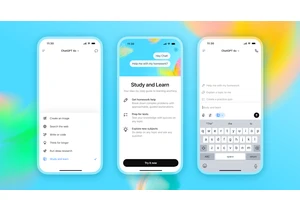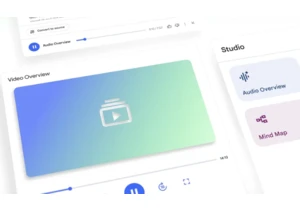If you're at all familiar with Meta's Ray-Ban-branded smart glasses, there won't be many surprises when it comes to its latest Oakley frames. The Oakley Meta glasses rely heavily on what's already been a successful playbook for the company: the style of a popular eyewear brand mixed with juuust enough tech to let you keep your phone in your pocket a little longer.
But the Oakley Meta glasses are also the social media company's first collaboration with a non-Ray-Ban brand (though both share a parent company in EssilorLuxottica). And while Meta stays pretty close to the strategy it's used for the last four years, its latest frames offer some hints about its longterm ambitions in the space.
Meta has described its Oakley-branded frames as "performance glasses," which isn't entirely surprising given Oakley's longtime association with athletes. But there are only a few actual upgrades compared to the Ray-Ban lineup. The Oakley Meta glasses have a notably longer battery life, both for the glasses themselves and the charging case. They are also able to capture higher quality video than previous versions.
With a starting price of nearly $400, though, I'm not sure those upgrades are worth an extra $100 - $200.
Why do they look like that?
Meta's debut pair of Oakley-branded glasses are based on the brand's HSTN (pronounced how-stuhn) frames and there's really nothing subtle about the design. The first of these is a limited edition version with shiny gold lenses and bright white frames (which Meta inexplicably calls "warm grey").
Like previous Ray-Ban models, they don't look overtly techy, but I still wasn't a big fan of the design. The glasses felt just a little oversized for my face and something about the bright white paired with gold lenses reminded me a little too much of a bug. The color combo also accentuates just how thick the frames are, particularly around the awkwardly wide nosepiece.
I posted a selfie on my Instagram Story and polled my friends on what they thought. And while a few politely said they thought I was "pulling them off," the majority said they looked too big for my face. A few told me they looked straight-up weird, and one summed up my feelings pretty well with "something looks off about them." Style is subjective, of course. And depending on your face shape and tolerance for contrasting colors, I could see others enjoying the design. I'm looking forward to seeing the rest of the HSTN collection, which is coming later this summer, and will hopefully have some more flattering color variations.
Looks aside, the glasses function almost identically to the Ray-Ban glasses Meta introduced in 2023. There's a 12-megapixel POV camera over the left eye, and an indicator light over the right that lights up when you snap a photo or start recording a video via the capture button. There are open-ear speakers in the arms so you can listen to music and hear notifications. Much like the Ray-Ban glasses, the speakers here are pretty good at containing the sound so others can't hear when you're listening at lower volumes, but it's definitely noticeable at higher levels. You can control music playback and volume pretty easily, though, with a touchpad on the right side of the glasses.
"Performance" upgrades
The most important upgrade that comes with the Oakley glasses is the battery. Meta claims the glasses can last up to eight hours with "typical" (non-constant) use and up to 19 on standby. I was able to squeeze a little over five hours of continuous music playback out of the battery in one sitting, which is about an hour better than the Ray-Ban frames. The charging case can provide up to 48 hours of additional runtime, according to Meta. It's been well over a week and I haven't yet had to plug in the case.
The charging case is, however, noticeably bigger and heavier than the Ray-Ban case. It's not a dealbreaker, but the case is too big for any of my pockets and just barely fits into my small sling bag. My other gripe with the charging case is the same complaint I had about the Ray-Ban case: there's no way to see the charge level of the case itself. There's a small LED in the front that will change from green to yellow to red based on the battery level, but it's hardly a precise indicator.
The other major upgrade is the 12MP camera, which can now shoot in 3K compared to 1080p on previous models. The higher resolution video is, notably, not the default setting, but I appreciated having the option. I could see it being especially useful for creators looking to shoot POV footage, but I mostly use the glasses for still shots rather than video.
San Francisco is currently having a record-breaking cold summer so most of my testing has been in fairly overcast conditions. It might be a product of the gray weather, but I found the photos I've shot with the glasses a bit overly saturated for my taste. They looked fine on an Instagram Story, though. The camera has a bit of a wide angle with a 100-degree field of view, so there's still a bit of a learning curve in terms of figuring out how best to frame the shots.
Another issue is that it's very easy for a hat or a piece of hair to make it into your photos without realizing. My previous experience with the Ray-Ban Meta glasses meant I was careful to pull my hair back before snapping a picture, but I was bummed to realize after a long bike ride that the visor on my helmet was visible in the frame of every photo and video. It seems like Meta may have a plan to address this: I noticed a setting called "media quality" that's meant to alert you when something is partially obstructing the camera. The feature is apparently still testing, though, and it wasn't functional. A Meta spokesperson did confirm it would be added in a future update, though. "Media Quality Check is a feature we're working to bring to our AI glasses collection in the future that will alert users when photos are blurry or if something like your hair or a hat blocks what you capture," Meta said.
The Meta AI app (formerly known as Meta View) can help fix other issues, though. It has a "smart crop" feature that can automatically straighten your pics to correct for any head tilt. It also has built in AI-powered edits for photos and video so you can restyle your clips directly in the app. And while the functionality isn't limited to clips shot with the glasses, the possibility of adding AI edits after the fact makes shooting otherwise mundane clips a bit more appealing. The ability to restyle video, however, is only "free for a limited time," according to the Meta AI app.
Meta AI
While the core features of Meta's smart glasses have largely stayed the same since it first introduced the Ray-Ban Stories in 2021, one of the more interesting changes is how Mark Zuckerberg and other execs have shifted from calling them "smart glasses" to "AI glasses." As the company has shifted away from the metaverse and made AI a central focus, it's not surprising those themes would play out in its wearables too.
And while none of the Meta AI features are unique to the Oakley frames, Meta has added a couple of abilities since my last review that are worth mentioning. The first is live translation. The feature, which you have to enable in the Meta AI app, allows the onboard assistant to translate speech as you hear it. If both sides of a conversation have a pair of Meta glasses, then you can carry on a full conversation even if you don't speak the same language. The feature currently supports Spanish, French, Italian and English.
I tried it out with my husband — a native Spanish speaker who was also wearing a pair of Meta glasses — and we were both fairly impressed. I would say something in English and Meta AI on his glasses would relay it to him in Spanish. He would then respond in Spanish and Meta AI would translate the words into English.
It's not the most natural way to speak because you have to pause and wait for a translation, but it was mostly effective. There were a few bugs, though. Because we were sitting close to each other, sometimes Meta AI would overhear the translated audio from the other person's glasses and translate it back, which made the whole thing feel like a bizarre game of telephone.
And over the course of a several-minute conversation, there were a handful of times when Meta AI wouldn't pick up on what was said at all, or would only begin translating halfway through a statement. We also encountered some issues with Meta AI's translations when it came to slang or regional variations of certain words. While it wasn't perfect, I could see it being useful while traveling since it's much smoother than using Google Translate. There was also something endlessly amusing about hearing my husband's words relayed back to me by the voice of AI Judi Dench (Meta tapped a bunch of celebrities last year to help voice its AI).
The other major AI addition is something called "Live AI," which is essentially a real-time version of the glasses' multimodal powers. Once you start a Live AI session, Meta's assistant is able to "see" everything you're looking at and you can ask it questions without having to repeatedly say "hey Meta." For example, you can look at plants and ask it to identify them, or ask about landmarks or your surroundings.
The feature can feel a bit gimmicky and it doesn't always work the way you want it to. For example, Meta AI can identify landmarks but it can't help you find them. While on a bike ride, I asked if it could help me navigate somewhere based on the intersection I was at and Meta AI responded that it was unable to help with navigation. It also didn't correctly identify some (admittedly exotic) plants during a walk through San Francisco's botanical gardens. But it did helpfully let me know that I may want to keep my distance from a pack of geese on the path.
I'm still not entirely sure what problems these types of multimodal features are meant to solve, but I think it offers an interesting window into how Meta is positioning its smart glasses as an AI-first product. It also opens up some intriguing possibilities whenever we get a version of Meta glasses with an actual display, which the rumor mill suggests could come as soon as this year.
Wrap-up
While I don't love the style of the Oakley Meta HSTN frames, Meta has shown that it's been consistently able to improve its glasses. The upgrades that come with the new Oakley frames aren't major leaps, but they deliver improvements to core features. Whether those upgrades justify the price, though, depends a lot on how you plan to use the glasses.
The special edition HSTN frames I tested are $499 and the other versions coming later this year will start at $399. Considering you can get several models of Meta's Ray-Ban glasses for just $299, I'm not sure the upgrades justify the added cost for most people. That's probably why Meta has positioned these as a "performance" model better suited to athletes and Oakley loyalists.
But the glasses do offer a clearer picture of where Meta is going with its smart glasses. We know the company is planning to add displays and, eventually, full augmented reality capabilities — both of which will benefit from better battery life and cameras. Both are also likely to cost a whole lot more than any of the frames we've seen so far. But, if you don't want to wait, the Oakley Meta glasses are the closest you can get to that right now.
This article originally appeared on Engadget at https://www.engadget.com/wearables/oakley-meta-glasses-review-a-familiar-formula-with-some-upgrades-120026844.html?src=rss https://www.engadget.com/wearables/oakley-meta-glasses-review-a-familiar-formula-with-some-upgrades-120026844.html?src=rssJelentkezéshez jelentkezzen be
EGYÉB POSTS Ebben a csoportban


OpenAI is rolling out a new Study Mode the company says is designed to give students a better understa





